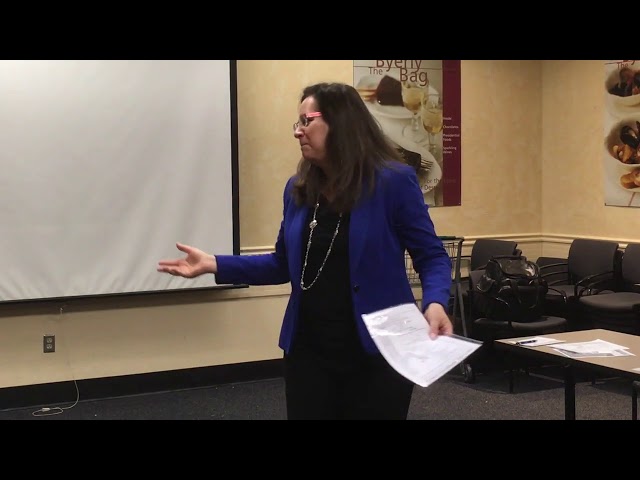Do you wish you didn’t depend on notes so much when speaking? But, are you afraid to let go of your notes, because you might forget something, or worse-yet, have the dreaded “blank-out”?
In less than 30 minutes you can, at your convenience, learn 10 ways to reduce your dependence on written out speaking notes so that you can speak with confidence and have greater engagement with your audience. The mini-workshop includes an activity on learning how to use keyword notes.
Planning YOUR Mini-Workshop:
1. Schedule a time (if you don’t have a half-hour right now)
2. Have a friend, co-worker or small group join you in a conference room (optional)
3. Click HERE to download the 2-page handout (The handout includes a list of the 10 Ways to Internalize a Speech, plus a keyword activity)
4. Click play on the video below (22-minute recording, with 2 places to pause for the keyword activity)
The 10 Ways to Internalize Your Speech on the Handout (the handout includes a sheet for the activity):
1. Repetition. Read it several times out loud. Or, listen to a recording of yourself.
2. Chunking. Chunk the content and practice parts of it (for example introduction, point 1, point 2, point 3, conclusion). Include transition statements that occur before and after each chunk.
- Read the chunk aloud, along with transition statements.
- Recall–try to say the chunk without peeking at the written speech
- Check by reading again (or if you recorded, you can listen to the recording)
- Repeat until you get the first chunk down, and then move onto another part.
3. Gestures. Connect specific gestures to your points (but make sure the gestures are natural). More
4. Method of loci (also known as a memory journey or the mind palace technique)
a. Physical journey: assign parts of your speech to different physical objects on a path and practice those parts at the object as you walk the path. For example, in my home, I will give my introduction at my front door, then point one is at the refrigerator, point 2 is at the stove, point 3 is at the sink and my conclusion is that at the dining room table.
b. Imaginary journey: you can create a mental or physical map that you visualize as you practice your speech. Some people even imagine the face of a clock.
5. Keywords. Practice from keywords (use memory-trigger keywords, no more than 3-4 per sentence). Stories you tell may only need a trigger phrase, such as “Family Christmas Party.” More on Notes–YOU GET TO PRACTICE THIS METHOD in the Workshop
6. Use picture and symbol notes. While picture and symbol notes can take longer to construct, they can quickly connect your brain to your content. More on pictures as notes
7. Practice from an outline. A logically structured speech, with a main idea and all content supporting the idea will facilitate internalization. If you can remember the structure, the logical flow, you will facilitate your own internalization of the content.
8. Tell stories. Relevant stories are the easiest parts of speeches to remember.
9. Use visual aids strategically to convey information that would be difficult to recall (statistics, charts)
10. Speaker notes on the handout. If you are using a handout, add a few speaker notes to your handout copy and use that as your notes.
Learn to be a Confident Speaker! Take Diane’s Online Course, No Fear Public Speaking: Look, Sound and Feel Confident!

